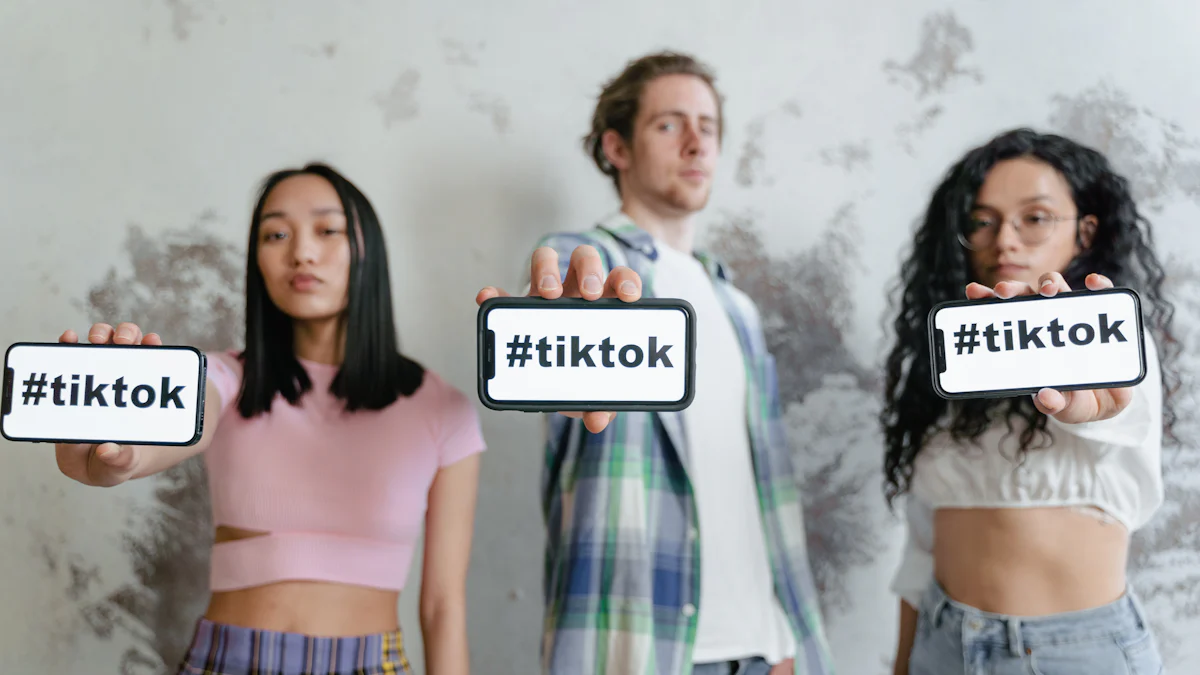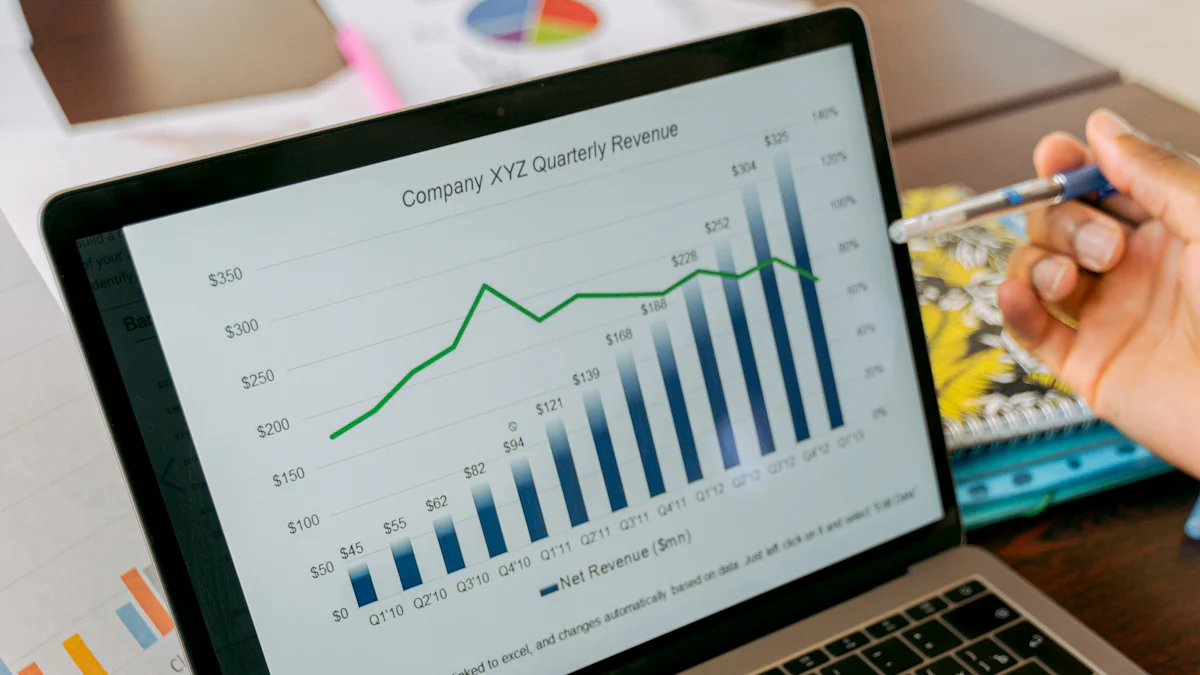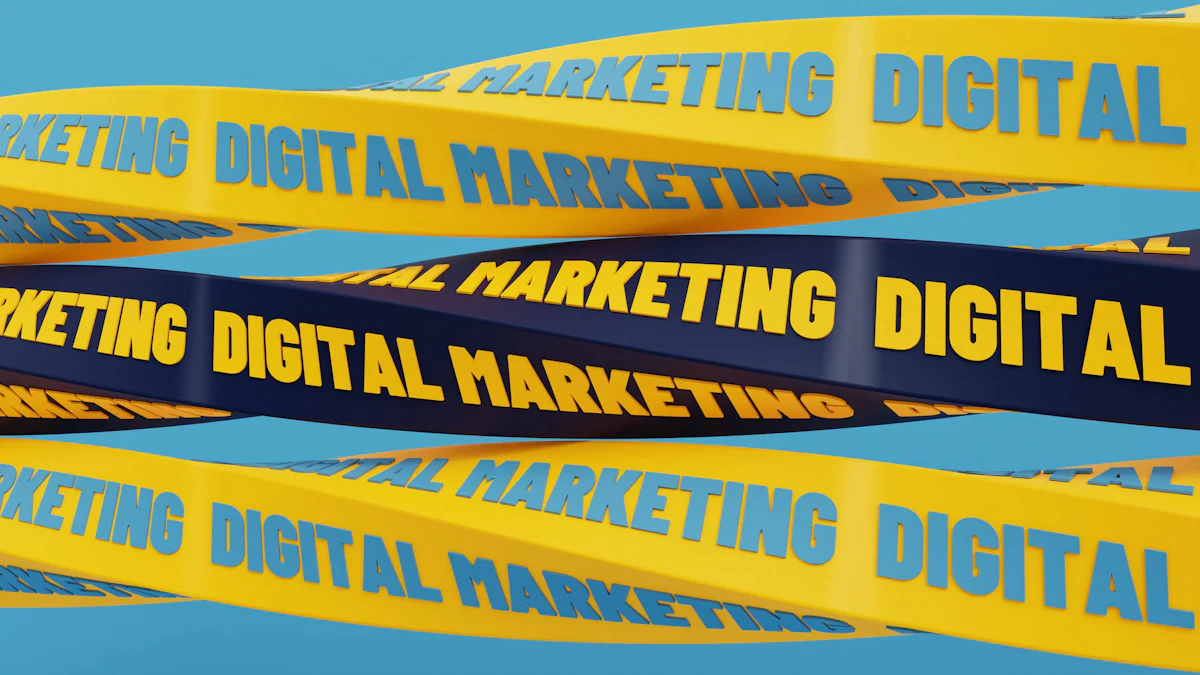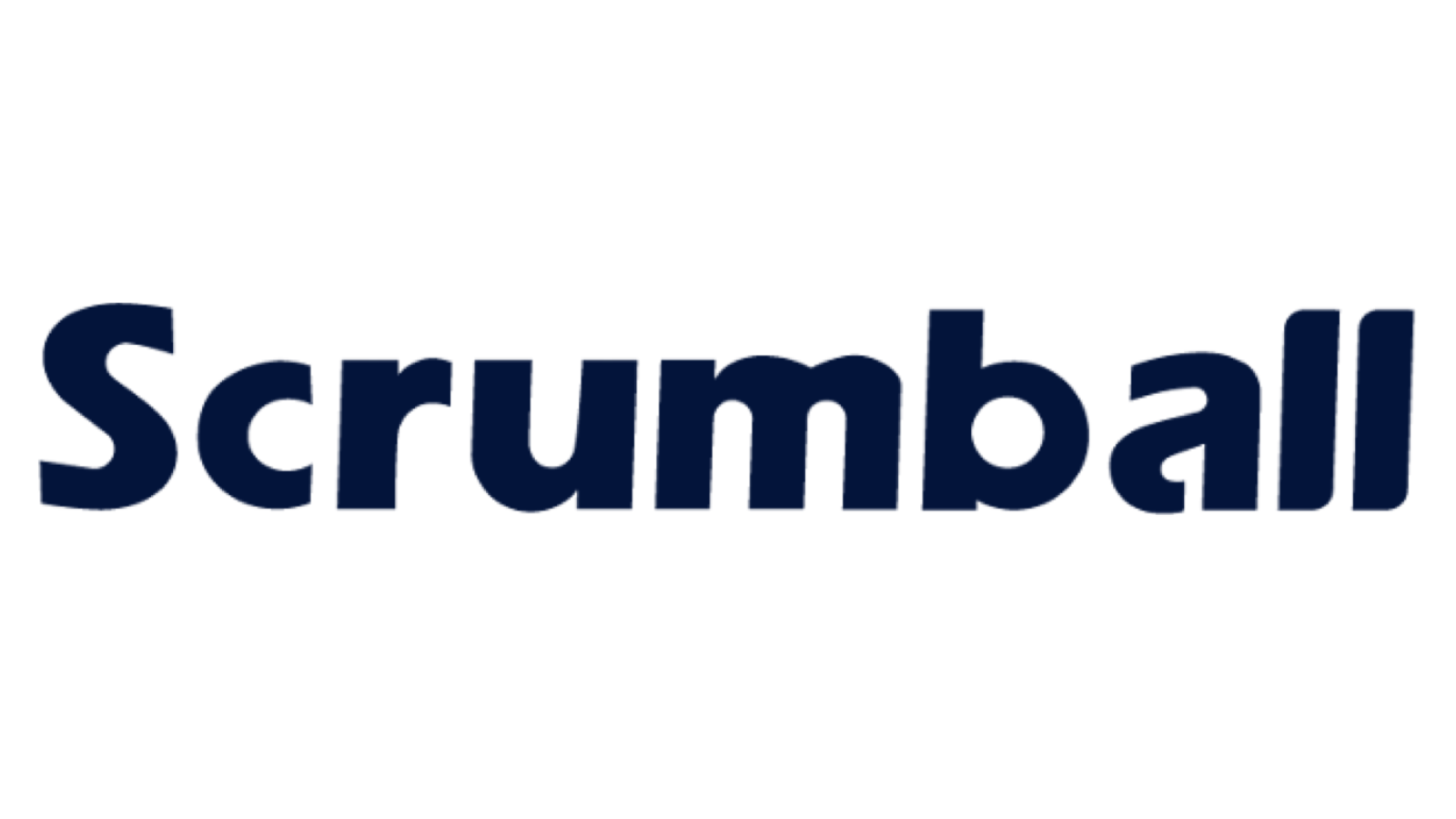Top 20 Influencer Marketing Stats Marketers Must Know

Influencer marketing has become a powerhouse in the digital world, with its market size projected to hit an astounding $24 billion by the end of 2024. This rapid growth highlights its undeniable impact on modern marketing strategies. As a marketer, understanding the latest influencer marketing stats is no longer optional—it’s essential. These numbers reveal how brands are allocating budgets, measuring ROI, and connecting with audiences in ways traditional advertising can’t match. By leveraging these insights, you can craft smarter, data-driven campaigns that resonate with today’s consumers and drive real results.
The State of Influencer Marketing in 2024

Industry Growth and Market Size
The influencer marketing industry has seen explosive growth over the past few years. In 2023, global spending on influencer marketing reached $21.1 billion, and by the end of 2024, it’s projected to hit an impressive $24 billion. This rapid expansion highlights how brands are increasingly prioritizing this strategy to connect with their audiences.
Marketers are also dedicating more of their budgets to influencer campaigns. Around 85% of marketers now allocate a specific budget for influencer marketing, with 59.4% planning to increase their spending in 2024. Some brands are going all in—14.5% are expected to spend over $500,000 on influencer marketing this year. These numbers show that influencer marketing growth isn’t slowing down anytime soon.
ROI and Effectiveness
When it comes to return on investment (ROI), influencer marketing delivers results that are hard to ignore. For every dollar spent, brands can expect an average return of $5.78. That’s a significant boost compared to many traditional advertising methods. In fact, influencer marketing earns 11 times the ROI of standard digital campaigns, making it one of the most effective strategies available.
Marketers also recognize the power of influencer marketing for building brand awareness. Over 70% of marketers consider it an effective way to increase visibility and engagement. With such strong performance metrics, it’s no surprise that 69% of marketers plan to increase their influencer marketing spend this year.
Consumer Trust and Behavior
Consumers trust influencers more than traditional advertisements. A staggering 81% of consumers say they enjoy influencer marketing because it feels more authentic and relatable. Social media recommendations from influencers often carry more weight than ads, with many people relying on these endorsements to make purchasing decisions.
This trust translates into action. Influencer marketing statistics reveal that even a small increase in influencer marketing spend—just 1%—can lead to a 0.5% boost in engagement. These numbers highlight the influencer marketing impact on consumer behavior and why brands continue to invest in this strategy.
Platform-Specific Influencer Marketing Stats
Instagram continues to dominate as a top platform for influencer marketing. With its visually-driven format and massive user base, it’s no surprise that 87% of influencers prefer Instagram for brand collaborations. This makes it the go-to platform for content creators looking to connect with brands and audiences alike.
When it comes to performance, Instagram delivers impressive results. The platform boasts an average engagement rate of 2.05%, which, while lower than TikTok, still outshines many other social platforms. Additionally, Instagram leads in ROI, with 30% of marketers naming it their best-performing channel for influencer marketing. If you’re looking to maximize your campaign’s impact, Instagram offers a proven track record of success.
YouTube
YouTube stands out as a powerhouse for long-form content and video-based influencer marketing. Content creators on YouTube often build deep connections with their audiences, making it an ideal platform for storytelling and product demonstrations. Engagement rates on YouTube vary by account size, with smaller channels (1,000–5,000 subscribers) achieving an average engagement rate of 1.9%. Larger accounts with over a million followers see slightly higher engagement at 3.4%.
The cost per video on YouTube can be higher than on other platforms, but the payoff is significant. Long-form content allows influencers to dive deeper into product features, creating a more immersive experience for viewers. This approach often leads to higher trust and conversion rates. For brands aiming to showcase detailed product information or tutorials, YouTube remains a top choice.
TikTok
TikTok has revolutionized influencer marketing with its short-form, highly engaging content. The platform’s unique algorithm ensures that even smaller accounts can achieve viral success. TikTok leads in engagement rates, with smaller accounts reaching an impressive 15.04% and accounts with over a million followers maintaining a strong 10.53%. These numbers far surpass Instagram and YouTube, making TikTok a standout for driving audience interaction.
Small businesses are also tapping into TikTok’s potential. Around 25% of small businesses now partner with TikTok influencers to boost their visibility and reach younger demographics. The platform’s rapid growth in influencer marketing spend reflects its effectiveness, with more brands recognizing the value of its creative and fast-paced content. If your goal is to capture attention quickly and authentically, TikTok should be on your radar.
Emerging Platforms
Influencer marketing trends on platforms like Twitch and LinkedIn
Emerging platforms like Twitch and LinkedIn are carving out unique spaces in the influencer marketing landscape. Twitch, known for its live-streaming capabilities, has become a hub for gaming influencers and creators who thrive on real-time interaction. This platform allows you to connect with highly engaged audiences who spend hours watching their favorite streamers. Twitch’s live format fosters a sense of community, making it ideal for brands looking to build authentic relationships with viewers.
LinkedIn, on the other hand, offers a completely different dynamic. As a professional networking platform, it’s perfect for B2B influencer marketing. Thought leaders and industry experts dominate LinkedIn, sharing insights and recommendations that resonate with decision-makers. If your brand operates in a niche or professional space, LinkedIn influencers can help you establish credibility and trust among your target audience.
Both platforms are growing in popularity for influencer campaigns. Twitch appeals to younger, tech-savvy audiences, while LinkedIn attracts professionals and executives. By understanding the strengths of these platforms, you can diversify your influencer marketing strategy and reach untapped markets.
Growth in ad spending on emerging platforms
Ad spending on emerging platforms is skyrocketing as brands recognize their potential. Twitch, for instance, has seen a significant increase in influencer marketing budgets. Its unique ability to deliver long-form, interactive content makes it a standout choice for brands aiming to engage audiences deeply. The platform’s growth mirrors the rising demand for live-streamed content, which feels more personal and immediate than pre-recorded videos.
LinkedIn is also experiencing a surge in ad spending. With its focus on professional content, it’s becoming a go-to platform for industries like technology, finance, and healthcare. Brands are leveraging LinkedIn influencers to share thought-provoking articles, host webinars, and create content that sparks meaningful conversations. This approach not only drives engagement but also positions your brand as a leader in your field.
According to recent trends, brands are increasingly allocating budgets to these platforms to capitalize on their unique strengths. Twitch’s live engagement and LinkedIn’s professional credibility offer opportunities that traditional platforms can’t match.
By investing in these emerging platforms, you can stay ahead of the curve and connect with audiences in innovative ways. Whether you’re targeting gamers on Twitch or professionals on LinkedIn, these platforms provide fresh avenues to amplify your brand’s message.
Trends and Predictions for Influencer Marketing in 2024

The Rise of Micro- and Nano-Influencers
Micro- and nano-influencers are reshaping the influencer marketing landscape. These smaller-scale influencers, often with fewer than 50,000 followers, deliver impressive results. Their audiences tend to be highly engaged, leading to engagement rates that surpass those of mega-influencers. For instance, micro-influencers often achieve rates between 3% and 8%, while nano-influencers can reach even higher levels of interaction.
Why are brands flocking to these influencers? Cost-effectiveness plays a big role. Collaborating with micro- and nano-influencers allows you to stretch your budget further while maintaining authenticity. In fact, 67% of brands now prefer working with smaller influencers, recognizing their ability to connect with niche audiences. If you’re looking to maximize ROI without breaking the bank, micro- and nano-influencers should be on your radar.
Increased Focus on Authenticity
Authenticity has become the cornerstone of successful influencer marketing campaigns. Consumers crave relatable, genuine content that feels less like an ad and more like a recommendation from a trusted friend. This shift has led to a surge in demand for influencer-generated content that reflects real-life experiences.
Studies show that 81% of consumers trust influencer recommendations over traditional advertisements. Authenticity doesn’t just build trust—it drives results. Campaigns that prioritize genuine storytelling often see higher engagement and conversion rates. If you want your campaigns to resonate, focus on partnering with content creators who align with your brand values and can deliver relatable narratives.
Platform-Specific Growth
Predicted Growth Rates for TikTok, Instagram, and YouTube
The big three—TikTok, Instagram, and YouTube—continue to dominate the influencer marketing space, but each platform offers unique opportunities for growth. TikTok leads the charge with its explosive popularity among younger audiences. Its short-form videos and viral trends make it a hotspot for creative campaigns. In 2024, 69% of brands plan to increase their TikTok budgets, reflecting its growing influence.
Instagram remains a powerhouse for visual storytelling. With 87% of influencers preferring it for collaborations, the platform continues to deliver strong ROI. Its features, like Stories and Reels, provide versatile ways to engage audiences. If your goal is to build brand awareness, Instagram’s proven track record makes it a reliable choice.
YouTube stands out for long-form content and deeper audience connections. It’s the go-to platform for product reviews, tutorials, and storytelling. Smaller YouTube channels often achieve engagement rates of 1.9%, while larger ones can reach 3.4%. These numbers highlight YouTube’s ability to foster trust and drive conversions. If you’re targeting audiences who value detailed insights, YouTube should be a key part of your strategy.
Emerging Trends in Influencer Marketing on Niche Platforms
Beyond the big players, niche platforms like Twitch and LinkedIn are gaining traction. Twitch excels in live-streaming, offering real-time interaction that builds community and loyalty. It’s particularly effective for gaming and tech brands. LinkedIn, on the other hand, caters to professionals. It’s ideal for B2B campaigns, where thought leadership and industry expertise take center stage.
Ad spending on these platforms is climbing as brands recognize their potential. Twitch’s interactive format and LinkedIn’s professional credibility provide unique ways to connect with audiences. By exploring these emerging platforms, you can diversify your strategy and tap into new markets.
AI and Data-Driven Influencer Marketing
Adoption Rates of AI Tools in Influencer Marketing Campaigns
Artificial intelligence (AI) is transforming influencer marketing by making campaigns smarter and more efficient. Nearly half of marketers—48% to be exact—are already using AI tools to enhance their influencer marketing efforts. These tools streamline processes like content analysis, audience targeting, and performance tracking, saving you time and resources.
AI adoption is growing rapidly because it simplifies complex tasks. For example, AI-powered platforms can analyze vast amounts of data to identify trends and predict outcomes. This means you can make decisions based on real insights rather than guesswork. With 50% of marketers reporting positive experiences using AI, it’s clear that these tools are delivering results.
If you’re not leveraging AI yet, you might be missing out on a competitive edge. As budgets for influencer marketing continue to rise—59.4% of brands plan to increase their spending in 2024—AI can help you maximize the impact of every dollar spent.
Use of AI to Identify Influencers and Predict Campaign Success
Finding the right influencer for your brand can feel like searching for a needle in a haystack. AI takes the guesswork out of this process by analyzing metrics like engagement rates, audience demographics, and content relevance. This ensures you’re partnering with influencers who align with your goals and resonate with your target audience.
AI doesn’t stop at influencer selection. It also predicts campaign success by analyzing historical data and current trends. For instance, AI can estimate how much engagement a campaign will generate or how likely it is to drive conversions. This allows you to set realistic expectations and optimize your strategy before launching.
According to recent trends, brands that use AI for influencer marketing see higher ROI and better campaign performance. With an average return of $5.78 for every dollar spent, AI-driven insights can help you stretch your budget further.
By integrating AI into your influencer marketing strategy, you can make data-driven decisions that lead to measurable success. Whether you’re identifying the perfect influencer or forecasting campaign outcomes, AI empowers you to work smarter, not harder.
Actionable Takeaways for Marketers
Leveraging Influencer Marketing Statistics
Tips for selecting the right platform based on audience behavior
Choosing the right platform can make or break your influencer marketing efforts. Each platform attracts a unique audience, so understanding where your target demographic spends their time is crucial. For instance, Instagram remains a favorite for visually-driven campaigns, with 87% of influencers preferring it for brand collaborations. If your audience loves engaging with photos, Stories, or Reels, Instagram should be your go-to.
On the other hand, TikTok excels at capturing younger audiences with its short-form, highly engaging videos. Its algorithm ensures even smaller accounts can go viral, making it ideal for brands looking to boost visibility quickly. YouTube, with its long-form content, works best for detailed product reviews or tutorials. Platforms like Twitch and LinkedIn cater to niche audiences—gamers and professionals, respectively—offering opportunities to connect with highly specific markets.
To select the right platform, start by analyzing your audience’s behavior. Ask yourself: Where do they spend the most time? What type of content do they engage with? Use these insights to align your influencer collaboration with the platform that best suits your goals.
Strategies for maximizing ROI with micro- and nano-influencers
Micro- and nano-influencers have become the secret weapon for brands aiming to maximize ROI. These smaller-scale creators, often with fewer than 50,000 followers, excel at building authentic connections with their audiences. Their recommendations feel genuine, which drives trust and action. In fact, 82% of consumers say they’re highly likely to purchase products recommended by micro-influencers.
Nano-influencers, in particular, boast engagement rates averaging over 4%, outperforming larger accounts. They thrive in tight-knit communities, making them perfect for targeting niche markets. Brands are catching on—44% now prefer working with nano-influencers, while 25.7% opt for micro-influencers. These partnerships not only cost less but also deliver higher engagement, making them a smart choice for budget-conscious marketers.
To maximize ROI, focus on influencers who align with your brand values and have an engaged audience. Prioritize quality over quantity. A smaller, loyal following often outperforms a massive but disengaged one. By investing in micro- and nano-influencers, you can stretch your budget while achieving meaningful results.
Optimizing Campaigns for 2024
Importance of tracking engagement metrics and campaign performance
Tracking engagement metrics is essential for understanding the success of your influencer campaigns. Metrics like likes, comments, shares, and click-through rates reveal how well your content resonates with the audience. Without this data, you’re essentially flying blind.
For example, platforms like Instagram and TikTok provide built-in analytics tools to help you monitor performance. Use these insights to identify what’s working and what isn’t. Did a particular post drive more traffic to your website? Did a Story generate higher engagement than a static post? These details can guide your future campaigns.
Don’t stop at surface-level metrics. Dive deeper into conversion rates, ROI, and audience sentiment. If your campaign isn’t meeting expectations, adjust your strategy. Experiment with different content formats, posting times, or influencer partnerships. Regularly reviewing performance ensures you stay on track and make data-driven decisions.
Aligning campaigns with trends like authenticity and AI-driven insights
Authenticity has become the cornerstone of a successful influencer marketing strategy. Consumers crave relatable, real-life content that feels less like an ad and more like a recommendation from a trusted friend. Campaigns that prioritize authenticity often see higher engagement and conversion rates. Partner with influencers who genuinely align with your brand and can create content that resonates with their audience.
AI-driven insights can take your campaigns to the next level. Nearly 48% of marketers already use AI tools to streamline their efforts. These tools can help you identify the right influencers, predict campaign success, and analyze performance. For example, AI can pinpoint influencers with high engagement rates or forecast how much ROI a campaign might generate. This allows you to make smarter, data-backed decisions.
By combining authenticity with AI-driven insights, you can create campaigns that feel genuine while delivering measurable results. Stay ahead of the curve by embracing these trends and adapting your approach to meet evolving consumer expectations.
The *top influencer marketing statistics* for 2024 reveal a clear path forward for marketers. From the $24 billion market valuation to the impressive ROI of $5.78 per dollar spent, these numbers highlight why staying informed is crucial. Platforms like TikTok and Instagram dominate, while AI tools revolutionize how you identify influencers and predict campaign success. By leveraging these influencer marketing statistics, you can craft smarter strategies that resonate with audiences. Stay adaptable, embrace data-driven insights, and use influencer marketing for business growth to stay ahead in this dynamic landscape.
FAQ
What is influencer marketing, and why is it important?
Influencer marketing involves collaborating with individuals who have a strong online presence to promote your brand, product, or service. These influencers connect with their followers in authentic ways, making their recommendations more relatable and trustworthy. This strategy works because people trust influencers more than traditional ads. It helps you build brand awareness, boost engagement, and drive sales effectively.
How do I choose the right influencer for my campaign?
Start by analyzing the influencer’s audience demographics. Look at factors like age, location, interests, and purchasing behavior. Ensure their followers align with your target market. Next, check their engagement rates. High engagement often indicates an active and loyal audience. Finally, use influencer analytics tools to evaluate their performance and authenticity. These tools help you make informed decisions and maximize your campaign’s impact.
What are engagement rates, and why do they matter?
Engagement rates measure how actively an influencer’s audience interacts with their content. This includes likes, comments, shares, and clicks. High engagement rates show that the influencer has a genuine connection with their followers. For your campaign, this means better visibility and higher chances of conversions. Always prioritize influencers with strong engagement over those with just a large follower count.
Should I work with micro- or nano-influencers instead of mega-influencers?
Micro- and nano-influencers often deliver better results for niche campaigns. Their smaller audiences tend to be more engaged and loyal. These influencers feel more relatable, which builds trust. They’re also cost-effective, allowing you to stretch your budget further. If your goal is authenticity and targeted reach, micro- and nano-influencers are excellent choices.
Which platform is best for influencer marketing?
The best platform depends on your audience and campaign goals. Instagram works well for visually-driven content and has the highest number of influencer collaborations. TikTok excels at engaging younger audiences with short-form videos. YouTube is ideal for long-form content like tutorials and product reviews. Emerging platforms like Twitch and LinkedIn cater to specific niches, such as gaming or professional industries. Analyze where your audience spends time and choose accordingly.
How can I measure the success of my influencer marketing campaign?
Track key metrics like engagement rates, click-through rates, conversions, and ROI. Use analytics tools to monitor performance and identify trends. Compare these metrics to your campaign goals. For example, if your goal is brand awareness, focus on reach and impressions. If it’s sales, track conversions and revenue. Regularly reviewing these numbers helps you refine your strategy.
How does AI improve influencer marketing?
AI simplifies influencer marketing by automating complex tasks. It helps you identify the right influencers by analyzing engagement rates, audience demographics, and content relevance. AI also predicts campaign success by evaluating historical data and trends. This allows you to make data-driven decisions and optimize your strategy. Many marketers report positive results when using AI tools, making it a valuable addition to your campaigns.
What role does authenticity play in influencer marketing?
Authenticity is the foundation of successful influencer marketing. Consumers trust influencers who share genuine, relatable content. Authentic campaigns feel less like ads and more like personal recommendations. This trust drives higher engagement and conversions. Partner with influencers who align with your brand values and can create content that resonates with their audience.
How much should I budget for influencer marketing?
Your budget depends on your goals, the type of influencers you work with, and the platforms you use. Micro- and nano-influencers are more affordable, while mega-influencers and celebrities charge premium rates. On average, brands earn $5.78 for every dollar spent on influencer marketing. Start small, track your ROI, and adjust your budget as needed.
Can influencer marketing work for small businesses?
Absolutely! Small businesses can benefit greatly from influencer marketing. Partnering with micro- or nano-influencers allows you to reach niche audiences without overspending. Platforms like TikTok and Instagram offer opportunities for smaller brands to go viral. Focus on building authentic relationships with influencers who genuinely support your brand. This approach can help you grow your business effectively.
See Also
Essential Influencer Marketing Platforms for 2024 Success
Key Influencer Marketing Statistics for Effective Strategies
5 Must-See Examples of Influencer Marketing Briefs
